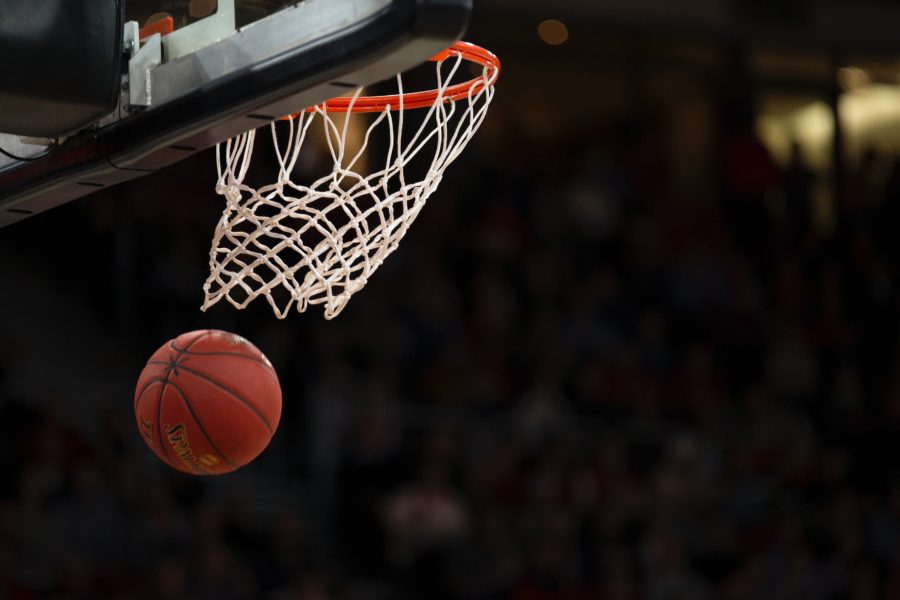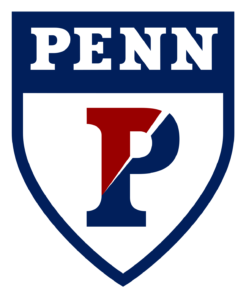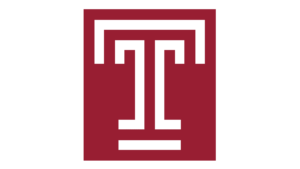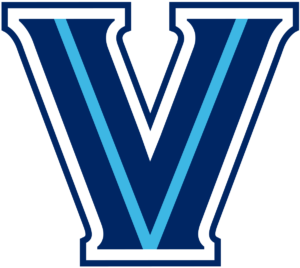
In the summer of 1978, Bob Weinhaur wrote a letter to his Penn basketball team, checking in on how their preparations for the upcoming season were going. In today’s world of instant communication and players’ near-constant presence on campus, the idea of writing a letter seems quaint.
The message Weinhaur imparted, beyond making sure the running and shooting and lifting were progressing as scheduled, was as timely as a team Zoom call is today.

“I told them to think about going to the Final Four,” Weinhaur says. “Not just watching it as spectators, but playing in it.”
The previous season – Weinhaur’s first leading the program – the Quakers had dropped a second-round NCAA Tournament decision to Duke. “We should have beaten them,” Weinhaur says. Although Penn lost standouts Keven McDonald, Tom Crowley and Stan Greene from that Ivy League championship team, Weinhaur’s goal was hardly outlandish. The returns of forwards Tony Price and Tim Smith, along with center Matt White and guards Bobby Willis and James “Booney” Salters, gave Penn a great foundation for success.
Big success. The following March, Penn moved through the East Region and reached the Final Four in Utah. The Quakers became the fifth Big Five team in history to accomplish that goal, joining La Salle, who won it all in 1954 and was the national runner-up the following year, Temple, who was the Tournament’s third-place finisher (that was a thing until 1979) in ’56, Saint Joseph’s third-place squad in 1961 and Villanova, which dropped a national title game decision to UCLA in ’71. Since then, the Wildcats have reached the Final Four five times and won it all in 1985, 2016 and 2018. When Philadelphia basketball fans speak reverentially about their town’s hoops history, it isn’t idle bragging. This city has quite a history of success.
The ’78-79 Quakers rolled to a 13-1 record in Ivy play and drew Iona in the first round of the tournament. The Gaels were coached by Jim Valvano, who four years later would lead North Carolina State to the NCAA title, and led by center Jeff Ruland, a future Sixer (for a little while, at least). Thanks to 27 points by Price, Penn earned a 73-69 victory. The win didn’t really register on the national scene, but two days later, the Quakers were the tournament’s big story.
On “Black Sunday” in Raleigh, Penn stunned top-seeded and third-ranked North Carolina, 72-71. Price’s 25 led a quartet of Penn double-figure scorers in the upset victory.
“At that point in time, we were riding on a lot of emotion and felt we could play with and beat anybody,” Weinhaur says.
Penn dumped Syracuse to reach the regional final and then outlasted St. John’s – which had shocked second-seeded Duke right after Penn’s win – to reach the school’s first-ever Final Four. It was a remarkable run by an Ivy school few figured could do anything of note. And it ended in crushing fashion, when Magic Johnson and Michigan State smoked the Quakers, 101-67, in the national semifinals. MSU ran out to a 50-17 halftime lead, as it seemed like Penn missed two dozen layups.
“We missed enough layups for a lifetime,” Weinhaur says. “If there was a time to play our worst game of the year, that was not it.”
The Quakers rebounded to take DePaul to overtime before falling, 96-93, in the national third-place game. Though the fun ended in Utah, it was an amazing run.

There was some magic 25 years earlier, when none of the nation’s top 10-ranked teams reached the Final Four in Kansas City, creating a perfect opportunity for La Salle and 6-6 all-America forward Tom Gola. The Explorers had only lost four times that year, but they weren’t considered potential champions, even though they had Gola and were in the top 20. But number one Kentucky refused a bid when three of its players were deemed ineligible. Three other top-10 squads chose to play in the NIT, which was almost as prestigious as the NCAA Tournament at the time. And other top squads were upset, including 10th-ranked NC State, which La Salle disposed of, 88-81, in the second round at the Palestra.
Gola was the clear leader of the team. One of two returning starters for the Explorers, he was a versatile player who could do just about anything with the ball. Legendary UCLA coach John Wooden once called him “the greatest all-around basketball player” he had ever seen. And the amazing Wilt Chamberlain, who grew up in Overbrook as Gola was starring for La Salle and later the Philadelphia Warriors, was positively reverential about Gola. “When I was growing up, you whispered the name Tom Gola,” Chamberlain once said. “He was like a saint.”
The Explorers needed overtime to whip Fordham, 76-74, in the NCAA tourney’s first round. They took care of the 10th-ranked Wolfpack, 88-81, before routing Navy, 64-48, to reach the Final Four. Behind 19 points and 17 boards from Gola, La Salle rolled past Penn State, 69-54, to set up a championship game matchup with Bradley. The first half was taut, but La Salle blew it open after intermission and cruised to a 92-76 victory and the title. Charles Singley and Frank Blatcher led the way with 23 each, while Gola matched his 19 points with 19 boards.
A year later, Gola (24.2 ppg, 19.9 rpg) was back, and the Explorers returned to the Final Four, but though they whipped Iowa in the semis, they didn’t have enough to stop San Francisco and future Hall of Famers Bill Russell and K.C. Jones in the final game. Still, it was an amazing two-year run for the school from Olney.
While Gola was a singular marvel, the ’55-56 Owls had a pair of backcourt standouts that comprised arguably the greatest backcourt duo in Philadelphia history and one of the best ever in the college game. Guy Rodgers and Hal Lear were all-around phenoms capable of scoring, passing and defending, and they led Temple to the 1956 Final Four in Evanston.
That season, legendary coach Harry Litwack led Temple to a 27-4 record. Once in the NCAA Tournament, the Owls whipped 14th-ranked Holy Cross, Connecticut and Canisius – by a total of 10 points. Lear had 40 in the win over the Huskies, while Rodgers paced Temple with 22 against the Golden Griffins. Though the pair was outstanding against fourth-ranked Iowa in the national semifinals, combining for 60 points, it wasn’t enough, as the Hawkeyes thrived at the foul line in an 83-76 win.
Despite the loss, Lear earned MVP honors for the Final Four after he erupted for 48 in the 90-81 third-place win over SMU. It was a remarkable conclusion to his career on North Broad Street and further evidence that he was an all-time great. As for Rodgers, Philadelphia basketball icon Sonny Hill said it best.
“Let’s put it in Philadelphia’s perspective: whoever it is you think is the second-best Big Five player, he’s not close to Guy Rodgers.”

The story of the 1961 St. Joe’s Final Four team is bittersweet. Under Jack Ramsay, the school’s greatest coach, the Hawks rolled to the Mid-Atlantic Region title and the Final Four, behind high-scoring forward Jack Egan. It was a dream season that ended in a nightmare, when, after the Hawks were trampled by Ohio State, 95-69, in the semifinals but outlasted Utah in quadruple overtime, 127-120, in the third-place game, a nationwide gambling scandal surfaced and three Hawks were expelled for having been paid to shave points. The school’s appearance in the Final Four was vacated, and the 25-5 joyride became a cautionary tale.
Villanova’s 1971 Final Four journey didn’t have a wonderful ending, either – on or off the court. The Jack Kraft-coached Wildcats reached the national title game against UCLA after routing Penn, 90-47, in the East regional final and sweating out a 92-89 double-OT win over Western Kentucky in the national semis. But the ‘Cats dropped a 68-62 decision to the Bruins in the championship game and then had to “vacate” their appearance when it was revealed that star forward Howard Porter had signed a professional contract during the season.

But there were no asterisks next to the Wildcats’ names in 1985, 2016 and 2018, when they won three national titles. The ’85 team, coached by Rollie Massimino, snuck into the round of 64 as the eighth seed and won its first three games by a combined nine points. But VU whipped North Carolina, 56-44, in the regional final and then subdued Memphis State to reach the national title game. There, they played the “perfect” second half to upend mighty Georgetown, 66-64.
“Villanova deserves a hell of a lot of credit,” Hoyas coach John Thompson said years later. “They beat the best team in the country.”
‘Nova reached the Final Four in 2009 but lost in the national semis to UNC. Last season, they dropped another semifinal decision, this time to Kansas. But in 2016, there was no losing. Jay Wright’s team won it all when Kris Jenkins’ three-pointer beat the buzzer and gave Villanova a 77-74 triumph over Carolina. Two years later, the Wildcats were even better. They won a school-record 36 games and captured their six tourney victories by at least 12 points each, with the 79-62 finals win over Michigan the capper. It was a remarkable season for what could be the city’s best team ever.
“When we got to the 2009 Final Four and we lost the first game, I thought that was my shot,” Wright said after the game. “I was happy. I was fine. Then, when we won the title and I thought alright, I’m happy and now I just want to make sure the guys graduate and the team stays competitive. This is out of my comprehension.”
Just as it was for those teams that accomplished so much throughout the city’s rich college basketball history.

